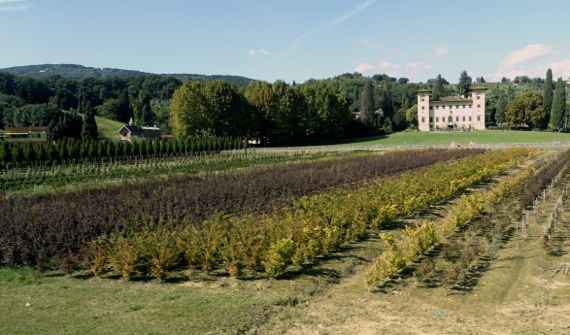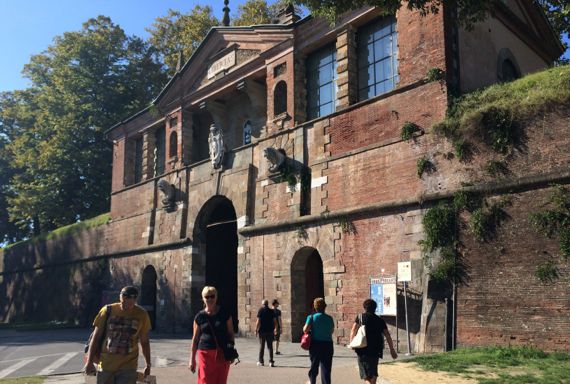Libertas
Sunday, 28 September 2014
Transition days have their own excitement. We partly left our “old” B&B, packing up but leaving our luggage and heading into town to see a Picasso exhibit we’d skipped, but were interested in, in part as an antidote to gorging on the Renaissance for the last few days. One room was all Picasso sketches prior to Guernica. The rest had one or two Picassos, and many works by contemporaries. Which is okay, but Picasso was heavily billed and not so strongly represented. We enjoyed it plenty as a palate-cleanser (JCB trademark phrase).
Florence was over-run (oops) with people in-town from the whole surrounding area for a run-walk event. Thousands, I’d say. They filled the streets for hours, and several bridges were pedestrian-only that usually have vehicles, so I’m sure plenty of people were happy to attend/participate, and plenty were a bit aggrieved. We enjoyed the hustle-bustle, and felt sure that some of the matrons were in an unusual mode, wearing t-shirts (that had the sponsor name: Ferragamo).
All too soon, we gathered up our luggage, said goodbye to our lovely hostess, E, and headed to the train station. Oh my. We hadn’t gotten our tix online, and that turned out to be the wrong move, or at least to make it more complicated. The ticket offices had a line you wouldn’t believe. At least they had a number system, where you could take a number and wait for it to come through the rotation, although JCB said they were hours from getting to our number. Meantime, he finally got the electronic ticket machine to take one of our credit cards (not the usual one—typically a problem with USA credit cards—people can make them work, but the machines can’t deal with them), and we had our pass to ride!

Our train had double-decker seating, so of course we picked “high” seats. The train was packed with regulars, tourists, and the runners returning to the suburbs. Loved this view of an “old” station, with separate waiting areas for first- and second-class travelers. They still have the classes (at least on some trains), but other than on the train, no differences in the stations…

Of course I was watching the landscape as we moved westward. I saw some fields and small gardens, plenty of apartment buildings in the towns and on the edges of them, a few abandoned industrial buildings, some new commercial architecture, roads, the expected hodgepodge. To my eye, however, there were disproportionate numbers of landscaping plant yards, although this is the only one I noticed on the grounds of a villa; everyone with acreage has to monetize it somehow—or else subsidize it. I was still amazed that most of the ridges were forested, although sometimes I could see the rows of trees, so they were planted, probably in a post-WWII reforestation program.

We disembarked at Lucca, our next stop, and the walls of the city were right in front of us as we left the station. While the city walls are what you notice, the city-center also contains the grid of the ancient Roman settlement the pre-dated them. The walls were built between 1500 and 1650, and include eleven bastions and twelve connecting curtains. We had to dodge a block to the west to enter the city through a gate thoughtfully and emotionally labeled Libertas.
Our new B&B is our splurge of the trip, and they must think so too—we were greeted with a gift half-bottle of prosecco, and happy are we now that it is empty!